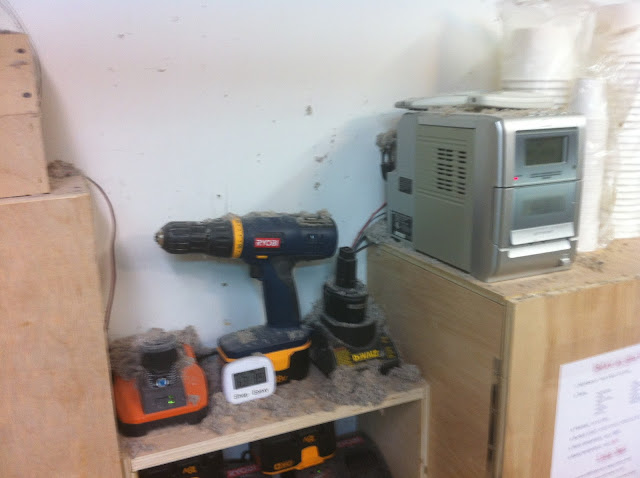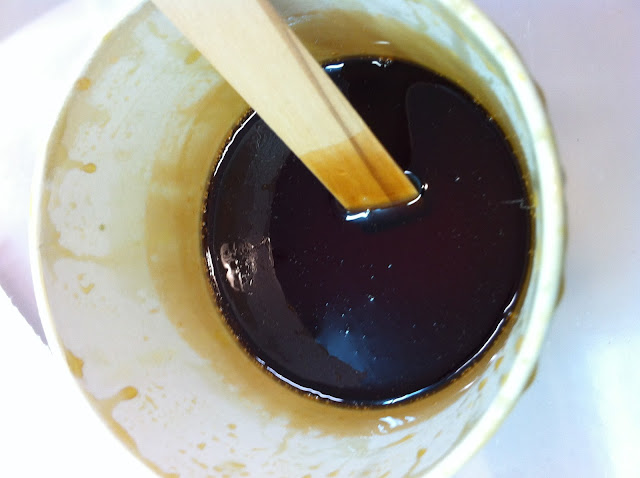Rear seat (6.1 hrs)
The back side of the rear seat is the first real opportunity to work with an other-than-flat surface.
Historically, builders have had their first head scratcher when laying the flat pieces of BID over this soon-to-be wavy surface. This is because the fiberglass tends to lift off the foam in many places, and introduce big air pockets under the weave, so the job becomes a little more complicated.
As on the front seat, the work began by shaping top and bottom at an angle, and since the table saw worked so well then, I decided to reenlist it for this job.
 |
| Top cut at 45˚ |
The foam is then removed from the outer 1.3”. Very carefully, I used the table saw again, staying away from the fiberglass. Then I sanded the last 1/8” or so of foam and slurry away by hand.
 |
| Bottom cut at 35˚, side foam removed |
The hard foam corners were beveled inward 1.5”, and all corners rounded with sandpaper.
Because the seat is 2” wider than plans, I elongated the hole in the rear seat by that much. This hole will create access to a few items that will eventually go behind the back seat, like the main gear attachment points, and break lines fittings.
A slightly bigger hole means slightly easier maintenance.
 |
| 2" wider access hole |
I cut vertically down to the fiberglass with a razor-knife...
... then I used my vibrating cutter to remove the foam. I was surprised at how difficult that was, and chose such gadget only after running out of better ways to do the job.
Next, I beveled the inside corner...
... and sanded everything smooth. A few chunks of foam bordering the fiberglass did not survive the process. The holes got filled later with dry micro.
Top and bottom of this piece needed a flox-corner, so I used my Dremel tool to remove the foam, then sanded the resulting channel to remove the micro-balloons from the back side of the fiberglass.
 |
| Slot ready for flox |
I used a few leftover BID pieces with a minimum 1” overlap as the first ply, followed by a whole BID piece. This made laying the ply on the contoured shape a lot easier than it would have otherwise been.
While cutting the fiberglass, I marked the fibers orientation on the multiple BID pieces with a black marker, so that I would not get confused later.
The last step in the fabrication of the back seat, is cutting the access hole in the middle, while leaving 0.7” of glass-to-glass bond.
On the front side, I marked the places where the slots for cables and controls will go, but I will do the cutting later on.



















































